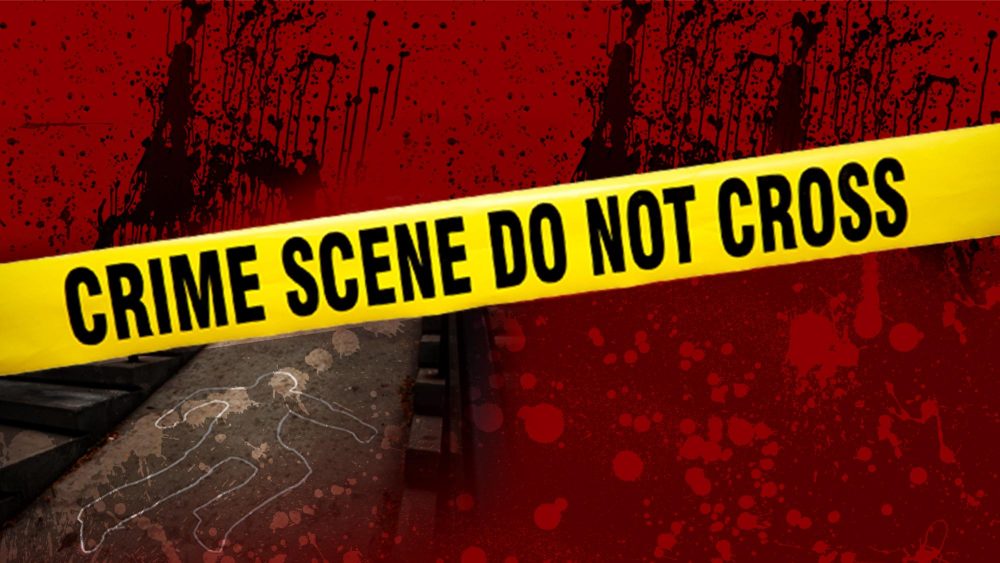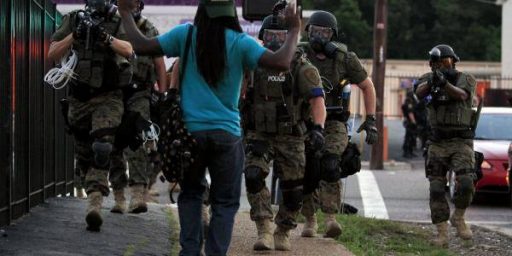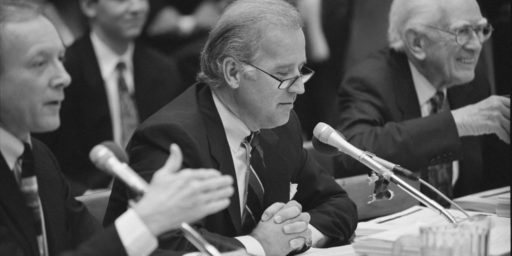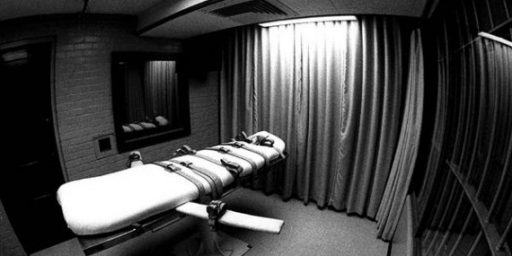Violence Inequality
The safety gap between affluent, white and poor, minority communities has grown over the last three decades.

In an essay for UnHerd, Zaid Jilani argues that “Only the wealthy can afford to defund the police.”
Contrary to the claims of “police abolitionists”, residents of poor communities often want more and better policing.
This is partly because they happen to live under a far greater threat of violent crime than other communities do: organised criminal networks have a much easier time taking root in low-income neighbourhoods than anywhere else. But this also because residents of low-income communities don’t have nearly as many resources to defend themselves as upper-income communities do.
[…]
[A]ccording to a recent paper published in the American Journal of Public Health this inequality is getting worse.
The authors examined violent crime across 13 cities in the United States between March and July in the years 2018, 2019, and 2020. They found that not only was violence much higher in poorer neighbourhoods, but that the gap between low-income and high-income areas in the prevalence of gun violence, aggravated assault, and homicide grew between 2019 and 2020.
One way to address this phenomenon would be to refer to it as “violence inequality”. Just as we track inequality on axes like income, wealth, and health care, we should acknowledge and measure the gap in public safety between the most and least dangerous neighbourhoods.
Violence inequality exists virtually everywhere in the United States, but it is particularly dramatic in some areas. The Chicago Sun Times recently analysed violent crime data across the city, describing what it calls the “safety gap”. The article notes that West Garfield Park, a predominantly black neighbourhood located in the West Side of Chicago, “has experienced a per capita rate of shootings nearly 20 times higher than downtown”. The gap in homicide rates is even more jaw-dropping. In 2021 so far, “the murder rate in the seven most dangerous police districts rose to a three-decade high of nearly 100 homicides per 100,000 residents — 30 times higher than the rate in the safest seven districts, where the rate fell to fewer than four per 100,000.”
Put differently, poor and minority neighbourhoods are reverting to historically high rates of violent crime at the same time as affluent white areas are becoming safer. The gaps are even worse now than they were in the early Nineties, long considered the nadir of America’s violent-crime problem. As criminologist Aaron Chalfin recently noted, in 1991, the least-safe communities in Chicago had rates of gun violence 13 times higher than those of the safest communities; in 2020, gun violence in the least-safe neighbourhoods was 25 times higher.
Violence inequality appears particularly pronounced when you break down the statistics by race. Homicide has long been one of the the leading causes of death for African American young men, topping unintentional injuries, suicide, and heart disease. The Violence Policy Center estimates that the ‘black homicide victimisation rate’ is six times as high as the overall ‘white homicide victimisation rate’. And yet this form of inequality is barely mentioned by the media, despite their obsession with nearly every other type of racial disparity. Why is that?
One explanation is that ordinary neighbourhood violence doesn’t fit neatly into the prevailing narrative, in which the primary problems faced by minorities are the result of systemic racism and white supremacy. Outside of the conservative media, it’s practically taboo to discuss the levels of violence that exist in parts of the United States without lengthy throat-clearing about how the real culprit is racism, capitalism or the police.
But that’s not the way people who live in these communities describe their own lives. Last summer, as progressive activists waged a sustained campaign to delegitimise the police, Gallup polling found that most African Americans wanted to either maintain current levels of police presence in their communities or expand it.
Still, the fact that addressing violence inequality is one of the most important things that the Democratic Party could do for underprivileged people must be a bitter pill for progressives to swallow (and it is almost certainly the Democratic Party’s job, as the GOP doesn’t look like winning elections in violence-plagued cities anytime soon). Addressing it would almost certainly involve more policing and tougher sentencing for people who have committed violent crimes, many of whom will likely be minorities. This would cut against the progressive project of ending “mass incarceration” and promoting alternatives to policing, and would no doubt feel to many progressives like doubling down on a racist and authoritarian system.
But tackling violence inequality can bring meaningful change to the lives of the people progressives say they care the most about. A March 2019 study published in Demography soberly noted that while homicide remains a leading cause of death for young black men, the dramatic decline in homicide rates that started in the Nineties “led to a 0.80-year increase in life expectancy at birth for African American males, and reduced years of potential life lost by 1,156 years for every 100,000 African American males”. According to the study, the drop in homicide accounted for “17% of the reduction in the life expectancy gap between white and African American males” between 1991 and 2014. In other words, tackling violent crime saved a lot of black lives.
The main obstacle to Democrats getting tough on crime is political. Much of the national media remains fixated on the drawbacks of incarceration and policing; influential political donors are now spending huge amounts of money to elect prosecutors who promise softer sentencing. Joe Biden may have written the 1994 crime bill, but he barely talks about the historic increase in homicides that took place in 2020, perhaps out of fear of alienating his base and playing into the hands of Republicans.
Yet there are signs that political reality is changing. During the November elections, voters in Buffalo, New York rejected the self-described police abolitionist who won the Democratic primary for mayor, voting instead for the incumbent mayor, who was forced to run as a write-in candidate. Similarly, voters in Minneapolis, Minnesota, ground zero for much of 2020’s police reform movement, shot down a referendum that would have abolished and replaced their police department. The mayor-elect of New York City is a former NYPD officer who campaigned on getting tougher on crime.
And in San Francisco, one of the most progressive cities in America, Mayor London Breed recently struck a different tone following a series of high-profile crimes. “It’s time the reign of criminals who are destroying our city, it is time for it come to an end,” she said. “And it comes to an end when we take the steps to more aggressive with law enforcement. More aggressive with the changes in our policies and less tolerant of all the bullshit that has destroyed our city.”
This is much more Matt Bernius’ bailiwick than mine and I don’t have neat solutions to all of this. I both support actively policing high-crime neighborhoods in theory and am wary of the reality of the quality of so much of our policing. I simultaneously think that we incarcerate far too many people for far too long and think we need to get the most violent people off the streets.
The thing that most interests me about Jilani’s piece isn’t the criminal justice aspect so much as the broader societal one. If we’ve ever had the ability to have an honest national conversation on these issues—and I’m skeptical that we were—the current polarization on these issues makes it impossible.





Thanks for the heads up on this one James. Once I’m done with the piece I’m working on right now, I’m definitely diving into this one. Generally speaking this matches other evidence I’ve seen in the past. I also think that it tends to gloss over a lot of important nuances.
Poor blacks and Hispanics, between a rock and a hard place.
@Matt Bernius:
I was hoping you would.
I am not the least bit surprised.
The police have always understood that they’re expected to keep the lower social order in line. Hence the blue line flag. But there are hopeful signs. Kevin drum has noted (with nice charts) that shootings of unarmed suspects dropped dramatically last year and incarceration rates for black teens are way down.
On it’s face, Occupy accomplished little, but there sure seems to be much more awareness of economic inequality since. Maybe we don’t need a “conversation”, only heightened awareness, which the George Floyd protests and prevalence of video have brought. “defund the police” hasn’t defunded the police, but it may be doing good.
I’ll also note we’ve inadvertently done a large scale sociology experiment. Do poor Black people have the problems they do because they’re Black or because of the conditions of poverty? We’ve worked hard to prove that under similar conditions poor, rural white people develop the same problems.
I look forward to Matt’s more informed take.
Important topic, thanks for bringing it to the fore. I’ll keep my powder dry for now, but I did want to give a side-eye to this:
Me screaming into the void: Define your terms. Show you work. etc…
I suspect Matt will have something more cogent to say about this.
How does the justice system actually work in these high crime areas? I lived in one of the rust-belt cities for a while, and it was commonly said that the local high crime area was a no-go area for the police. Has this been studied systematically? Is there a highly visible police presence in Englewood in Chicago? Would a aggressive targeted approach to narcotics help?
@Mimai:
Spoiler alert: You are right. Also the term “better policing” needs to be unpacked.
It’s very hard not to believe that the war on drugs ruined the police and prosecutors for at least my lifetime. I can’t imagine the person who relishes the idea of putting some guy aware for being a small-time drug dealer. You solve a real crime and at least the person who did it has been identified. That’s justice. Bust somebody for dealing meth in the midwest, and so what? Another dealer pops up. There’s no justice.
That’s why Jilani, who seems dumb, in Unherd, which seems dumber (vaccine purity sweeping the west for example), thinks we need to be more tough on crime. The justice system has drained itself completely. All it has is the dumbest logic of the war on drugs.
This article in ProPublica presents a different picture, i.e. a real one. Basically, non-profits and police in Philadelphia were working together with at-risk youths until Covid came. Work stopped and violence surged soon after.
@Modulo Myself: Oddly, Jilani’s progressive credentials are pretty strong:
The fellowship in question is a Berkeley.
@James Joyner:
Zaid been on some race bullshit for a while now. Really it’s just typical lefty contraianism (see: Matt Taibbi and Glenn Greenwald).
As far as the subject goes; the correlation between “tough policing” and crime rates doesn’t really exist. Most municipalities see the same rises and drops in crimes, independent of policy. Racial disparity is easy to point out, but policy is still the hard part. In America we default to the idea that policing has the largest effect on crime… But there isn’t a whole lot of evidence behind that idea.
@James Joyner:
I may be addressing that in the response — I haven’t decided.
Jilani an example of a growing group of writers that for lack of a better term I’m calling Iconoclastic/Reactionary Progressives. Glenn Greenwald, Matt Taibbi, Michael Tracey, and others are examples. On the one hand, they publicly talk about the Democratic party being too far to the right. And on the other hand, they increasingly seem to be advocating for reactionary responses to various social issues (see this article) or stake out anti-anti-Trump positions. As a result, they tend to get circulated a lot in IDW and among thoughtful conservative commentators of proof that conservative positions are so common sense even avowed liberals agree. They also often end up making a lot of Fox News appearances.
I’m honestly not sure what to make of them.
@James Joyner:
It’s just a dumb article filled with platitudes. I mean, look at Unherd’s headlines. Is this the end of progressive America? Has the Great Barrington Declaration been vindicated? It’s all just click-bait trash.
Honestly, not counting progressives, does anyone do actual work? The ProPublica article was written by someone who did real work. Jilani’s ‘essay’ is just spin.
Celebrate redneck culture, black or white, get more of it.
Thomas Sowell’s 2005, ‘Black Rednecks and White Liberals’ gets right to the heart of the matter. White Liberals promote the casting in amber black ghetto culture which is just redneck culture brought into the inner cities as Southern blacks migrated to factory jobs in the mid-20th century.
But white Liberals know better. Plus there is a lot to siphon off in the protest-and-government-action model. And like the ‘Curley Effect’ the last thing the “leaders” want it their constituency to improve their lot in life and perhaps vote differently.
–Sowell, Thomas. Black Rednecks & White Liberals (p. 64).
@Modulo Myself:
Without knowing what the Great Barrington Declaration is, I’m inclined to apply the usual rule of thumb that the answer to all headline questions is “no”.*
It’s also a very rarified target audience who knows what that is off the top of their head.
And checking what the declaration is, I stand by the no, but I suspect the article is trying to make it a yes.
*: the exception that proves the rule is Gizmodos lovely headline Should you bring a llama to your wedding?
Sadly, in a bit of journalistic malpractice, Gizmodo gives into bothsiderism, and shies away from the enthusiastic “YES!” that is most reasonable.
I think it’s a mistake to focus too much (or at all) on the author. For all his faults (first I’ve heard of him), he does shine a light on an important topic: “violence inequality.” And he also highlights the fact that potential solutions are not so neat and tidy.
It is true that many of the loudest advocates for [insert policy of your choice] don’t actually have skin in the game — ie, they don’t live in these communities. I’m not suggesting that they should be ignored or that they are necessarily wrong, but rather that we ought to contextualize their advocacy.
Further, the author is right to cite the polling data and other indicators that communities of color often see things differently than progressive activists. And yet I think it’s a mistake to reflexively venerate the perspective of these communities. There’s just as much vengeance seeking within these communities as there is outside of them.
And while vengeance is an understandable reaction to relentless violence and neglect, it’s not something that I think ought to guide our policy deliberations.
Gandhi: poverty is the worst form of violence
I live in a poor minority neighborhood (mostly Hispanic some black). I’ve had neighbors shot multiple times and even a drive by down the street and around the corner. When people here want more policing it’s to solve break ins, assaults, murder, etc. What they get is more tickets for questionable infractions. I was issued a ticket because the front bumper of my car was three inches (measured it) over the side walk in my driveway. Wheel chairs could easily get around it but clearly it was such a danger they had to ticket me but not enough to knock on my door to let me know. You can give the cops video evidence, witness accounts and only sometimes do they seem to care enough to actually do anything. It was worse in Chicago if you lived in a poor area in general as the cops sometimes wouldn’t even show up and if they did it was an hour later after the paramedics and people have left.
Now having said that I’ve had some outstanding interactions with the police force in better neighborhoods…..
@OzarkHillbilly: Exactly! In the opening statement, the word “better” seems more operative than the word “more” in a world of potential George Floyds and Philando Castiles.
Several issues:
1. The US already is one of the “toughest on crime” countries in the developed world, and it’s not clear how getting even “toughester on crime” would work any better. It may not be popular, but crime needs to be addressed socially, not just by throwing more police at it.
2. There’s an underlying problem that too many police see their role in minority communities as subduing the population, not protecting the population from crime.
3. To many local governments use the police primarily for revenue collection, not security purposes.
Interesting facts you find on the internet: the last two years have seen big increases in police line of duty deaths. The largest cause of death was covid. The virus was responsible for the 66% of police officer deaths in 2021.
https://abcnews.go.com/Politics/record-number-law-enforcement-officers-killed-line-duty/story?id=82219737
The unvaccinated and unmasked are copkillers!
@Stormy Dragon:
Correct on all points. Though the first, but it needs to remembered that for US, the policy is to incarcerate for any and all crimes, with a minority receiving tougher sentences than poor whites and middle class whites get probation and a fine for the lesser crimes. ‘Tough on crime,’ could be effective if it is focused on crimes of violence or implied violence (use of a weapon). If that happened we have many fewer people in prisons.
@Matt:
Would you all stop writing my article for me?
Spoiler alert: I’m going to go heavily into this topic.
@Matt: I think that’s exactly the point. Right now, police exist to fund local government in many, many cases. Stop and frisk, for instance, is a fun way to hassle poors and enhance the revenue stream, plus keep the private prison pipeline solvent.
Most middle class and up white people live in suburbs and neighborhoods where an audible gasp goes through NextDoor when someone’s door gets kicked down in broad daylight (*spoiler: drugs were involved) that results in social media rants about “nothing in here is worth dying for” and runs on the local gun shop. But really they have no clue. The vast unwashed hordes of poors (esp. the ones with darker skin) they’re convinced are going to “come for them” can’t even get out of the city because the buses don’t run to those suburbs. (And the manufacturing that moved there has constant fights with local government about their sudden recognition of the importance of public transit, but, hey, they chose to move to the whiter pastures of lower taxes)
Police don’t actually *stop* crime. They solve crimes, but they don’t prevent them, and if the argument is “crime prevention” it’s not being made in good faith.
To take a recent sad example, the police who were called to the domestic disturbance for Gabby. Many survivors of domestic abuse were able to see clearly what was going on in the videos released, but the police who responded were not trained well enough in domestic abuse – and a couple of them were clearly part of the good ol’ boy network – to recognize what was staring them in the face. She was “hysterical” so she was the baddie, and her boyfriend was laughing and joking with the cops, so he was the victim.
I don’t know what the answer is, but it’s not to put *more* of those cops on the street – they’re not preventing any kind of crime. It could be to better fund the training for the cops we have, or to spend more money on background checks for the cops we have (don’t get me started on how cops who kill unarmed kids should never be able to work as a cop again, and that’s before my rant about members of white supremacist groups have no business with an official gun and badge), or to fund some full-time social workers whose job it is to know/recognize people with disabilities, people who are being abused, etc.
@Matt:
I’m going to go out on an uninformed limb here (hey!, it’s a blog) and offer this speculation.
I’m guessing that most professional police are like most people. They are not going to volunteer to work in the hardest, most violent neighborhoods. As a result, over time, the most talented police are going to migrate to the best neighborhoods leaving the lower performers to police the worst.
It is kind of like the teaching profession. We want to best teachers in the most difficult schools. However, the best also want what’s best for themselves and their families. And so you get the best teachers migrating to the best school districts. And it would take a lot more incentives for them to work in the hardest districts.
Just a thought to throw out there.
A lot of our police problems come down to an abandonment of the “Peelian Principles” of effective modern policing:
@Scott:
Mostly true, I expect. But I remember reading an anecdote about a graduate of, I think, the LA police academy being assigned to a precinct in a wealthy neighborhood. Pissed him off. He wanted to go where he’d tell people what to do, not where people would tell him.
@mattbernius: Please do.